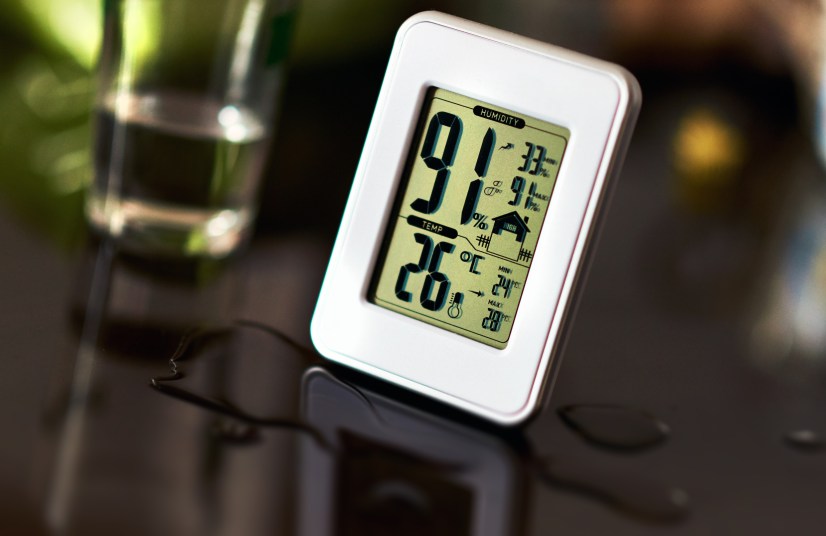Your Home’s Humidity Could Be Causing Your Health Woes — Here’s How to Measure It

We write about products we think our readers will like. If you buy them, we get a small share of the revenue from the supplier.
Settling on the best home humidity level is key if you want to protect yourself from a whole host of illnesses. Of course, finding a good house humidity level can be tricky; a variety of issues arise if the air is too moist or too dry. Luckily for you, we’ve covered the basics when it comes to ideal indoor humidity levels so you and your family can stay happy, healthy, and comfortable.
Aviad Elgez, ND, recommends keeping the humidity levels between 40 and 50 percent. If the air is too dry, you put yourself at risk of developing respiratory issues like asthma, bronchitis, nosebleeds, and sinusitis, according to the Cleveland Clinic. “Your sinuses will dry out,” Daniel Allan, MD, writes. “The mucus that normally should be gooey and thick and can trap infection gets drier. So you’re more likely to get a cold because your mucus is not as able to catch things that you breathe in.”
Conversely, mold can grow if the air is too moist. Clouds of mold can travel through the air unseen by our eyes, which means you won’t even know you’re in trouble until you start developing symptoms, like coughing or wheezing, eye irritation, throat irritation, nose stuffiness, or even skin irritation, according to the Centers for Disease Control and Prevention (CDC). Mold is especially dangerous for people with pre-existing respiratory conditions, like asthma.
How to Tell What Your Home’s Humidity Level Is
Now that you know what a good level of humidity in houses is, you can figure out whether you’re in a healthy range. To do that you’ll need a humidity meter. Fortunately, you can find one for less than $15 on Amazon. We recommend the ThermoPro TP50 ($10.99, Amazon) because it’s portable and easy to use.
What to Do If Your House Is Too Humid
You increase your risk of finding mold if your home’s humidity is above 60 percent, Elgez tells Mind Body Green. If you discover that your house is too humid, there’s a chance mold has already developed and you just haven’t noticed. “A lot of people think black mold is the one to worry about, but it turns out there are a lot of different species of mold that could grow at home,” Elgez says. “White mold, Aspergillus, can actually be more toxic depending on what species it is.”
The good news is a dehumidifier should be good enough to reduce your home’s humidity levels to more acceptable numbers. Finding the best model for you will depend on how high your humidity levels are, how big your home is, and how quiet you want the machine to be.
If you notice mold already growing or you’re experiencing symptoms of mold exposure like headaches, fatigue, and muscle pain, you should schedule an appointment with an expert ASAP to test the air. They can advise you on how to remove mold if that is indeed the problem.
What to Do If Your House Is Too Dry
Whereas you would use a dehumidifier to dry out a room, you should use a humidifier to add moisture to the air if your home is too dry. Elgez recommends staying away from hot air humidifiers, as these create conditions that are breeding grounds for mold; opt for cold-air models instead. You can also check out our roundup of the best home humidifiers to find the right one for your space.
Now that you’re an expert when it comes to recommended house humidity levels as well as what to do if your home is too humid or dry, you can prevent illness this winter. After all, this is the time for hot cocoa by the fire and Christmas carols — not sniffles and fevers.
More From FIRST
A Common Antibiotic Could Be the Key to Warding Off Alzheimer’s, New Study Claims
Garlic Essential Oil Could Be the Key to Fighting Lyme Disease, Study Suggests
The Best Chewable Tablets for Sleep to Help You Catch Those Zzzs













